Opinion & Analysis
How your shoulder blades can affect your club face: Part 2
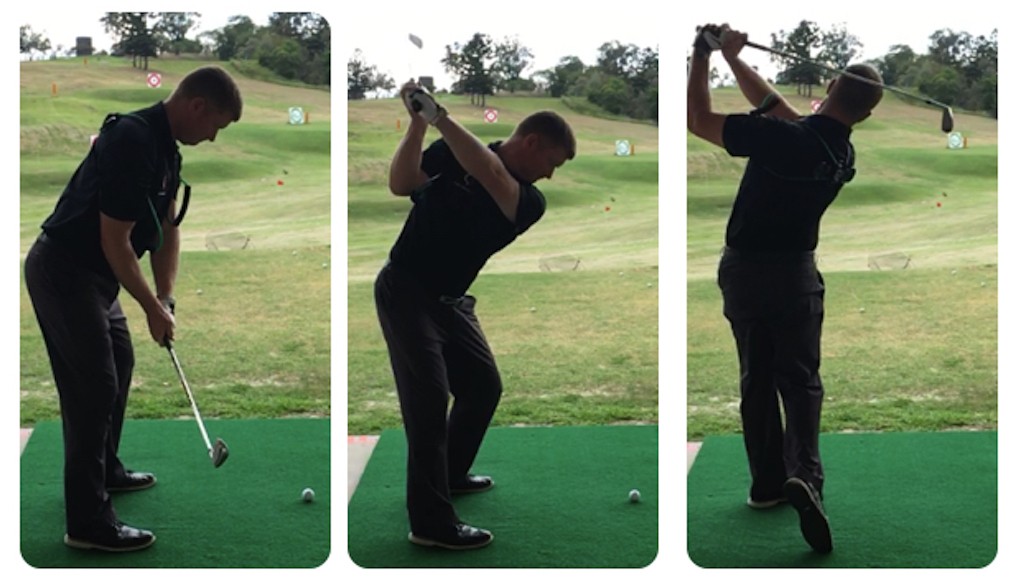
This article was co-authored with Chris Gibson, an Australian AAA-rated golf professional. His teaching philosophy focuses on simplicity and longevity in the game, providing help for golfers at all levels. He focuses on interpreting information from technology and applying it in the simplest way possible to help his students
Before you begin reading this article, make sure you have read Part 1 in this series, otherwise not much of this is going to make sense! Here, in Part 2, Chris and I are going to offer solutions that will help you to develop better stability and control of those all-important shoulder blades.
But first, in response to requests for a more detailed photographic explanation, we will also show you the good and bad of scapula-positioning when standing upright and in a golf setup. The two models featured are an underdeveloped teen who has poor scapula control, and a top-100 player in the world who has five years of scapula stability training under his belt (in addition to other training).
You can see that in Pic 1; the teen had a lack of bulk and activation in the muscles surrounding the scapula and it appears to poke through the skin. This leads to the right shoulder sitting very low and internally rotated at set up (Pics 2 and 3), which as we suggested in Part 1 of this article, makes it ultimately more difficult to control the clubface consistently. Where as the more trained athlete (whilst still not perfect: right shoulder is low) holds his scapula better in standing and set up, which we believe gives him a better chance to repeatedly control the clubface efficiently in his action.
Pic 1
Pic 2
Pic 3
Hopefully that clears things up for you and we can finally offer you a solution to training those scaps. The scapula is notoriously difficult to control; instinctively, we generally have poor awareness and usually aren’t very strong or stable in the muscles that surround it. Training of these muscles can be be tricky and complicated, so we have tried to simplify it for you by delivering two sets of simple exercises that we use as a starting point for many of the players (elite or otherwise) that we work with.
These simple drills can be done using either a piece of rubber tubing or more ideally, the training piece you will see in the photos called the Gravity Fit Thoracic Pro.
We have created one mini program for home and one mini program for the practice range. The movements are simple and don’t require any kind of in-depth anatomical knowledge to perform them correctly. We have supplied photos and descriptions of how to perform the movements, but also welcome questions and queries.
Home Exercises
Circuit – 3 Rounds – 30 seconds of rest between exercises.
- Tubing Push Out – Thoracic Pro – 12 reps
- Wall Push Up – Thoracic Pro – 12 reps
- Set Up Posture Drill – Thoracic Pro – 45 secs
- Waist to Waist Turns – Thoracic Pro – 10 reps
1. Tubing Push Out
- Purpose: Training scapula awareness, control and endurance
- Method: Stand tall, press arms forward keeping shoulder blades and spine connected to back paddle, turn palms up as you near end range. Control back to start position and repeat.
2. Wall Push Up
- Purpose: Training scapula awareness, control and endurance.
- Method: Stand tall, lower your chest toward the wall keeping your shoulder blades and spine connected to back paddle. Control back to start position and repeat.
3. Set Up Posture Drill
- Purpose: Training scapula awareness, control and endurance in golf setup.
- Method: In golf set up with hands in tubing, turn shoulders/elbows/hands outwards. Gently pulse hands against tubing.
4. Waist to Waist Turns
Purpose: Training scapula awareness, control and endurance in rotation movement pattern.
Method: In golf setup with hands in tubing, turn shoulders/elbows/hands outwards. Turn into backswing then turn into follow through. Maintain shoulder/elbow/hand positioning all the way through.
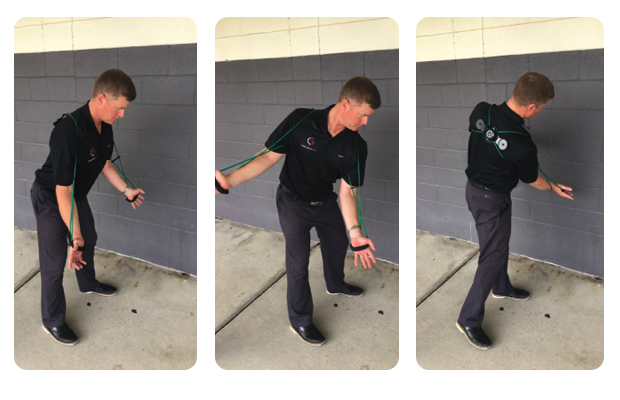 Range Drills
Range Drills
Circuit – 10 rounds – 20 secs rest between drills
- Set Up Posture Drill – Thoracic Pro – 20 secs
- Waist to Waist Turns – Thoracic Pro – 10 reps
- Preset, Backswing to Impact – 5 reps
- Preset, backswing to hit ball – 3 reps
1. Set Up Posture Drill
- Purpose: Training scapula awareness, control and endurance in golf setup.
- Method: In golf set up with hands in tubing, turn shoulders/elbows/hands outwards. Gently pulse hands against tubing.
2. Waist to Waist Turns
- Purpose: Training scapula awareness, control and endurance in rotation movement pattern.
- Method: In golf set up with hands in tubing, turn shoulders/elbows/hands outwards. Turn into backswing then turn into follow through. Maintain shoulder/elbow/hand positioning all the way through.
3. Preset, Backswing to Impact
- Purpose: Practice first move, top of backswing and back to impact in controlled manner. Opportunity to discover what positions feel like with quality scapular control under low load (moving slowly).
- Method: Set club parallel to ground with good shoulder position (connected scapulae), slowly swing up to top of 3/4 backswing and back to impact.
4. Preset, backswing to hit ball
- Purpose: Taking the movement patterns and control of the scapula and applying it to hitting balls.
- Method: Set club parallel to ground with good shoulder position (connected scapulae), complete rest of swing and impact at normal speed
The equipment featured in the exercises is called a Gravity Fit Thoracic Pro. It was conceived and designed by a world leading scientist in the field of physiotherapy. Designed for the specific task of training stability and strength in the shoulder girdle and scapula, it also works really nicely when applying that quality to dynamic rotation in a golf swing context. We love using it with our students and you can get one here: www.golffitproshop.com.
- LIKE45
- LEGIT10
- WOW3
- LOL1
- IDHT1
- FLOP1
- OB1
- SHANK32
19th Hole
Vincenzi’s LIV Golf Singapore betting preview: Course specialist ready to thrive once again

After another strong showing in Australia, LIV Golf will head to Sentosa Golf Club in Singapore looking to build off of what was undoubtedly their best event to date.
Sentosa Golf Club sits on the southern tip of Singapore and is one of the most beautiful courses in the world. The course is more than just incredible scenically; it was also rated 55th in Golf Digest’s top-100 courses in 2022-2023 and has been consistently regarded as one of the best courses in Asia. Prior to being part of the LIV rotation, the course hosted the Singapore Open every year since 2005.
Sentosa Golf Club is a par 71 measuring 7,406 yards. The course will require precise ball striking and some length off the tee. It’s possible to go low due to the pristine conditions, but there are also plenty of hazards and difficult spots on the course that can bring double bogey into play in a hurry. The Bermudagrass greens are perfectly manicured, and the course has spent millions on the sub-air system to keep the greens rolling fast. I spoke to Asian Tour player, Travis Smyth, who described the greens as “the best [he’s] ever played.”
Davis Love III, who competed in a Singapore Open in 2019, also gushed over the condition of the golf course.
“I love the greens. They are fabulous,” the 21-time PGA Tour winner said.
Love III also spoke about other aspects of the golf course.
“The greens are great; the fairways are perfect. It is a wonderful course, and it’s tricky off the tee.”
“It’s a long golf course, and you get some long iron shots. It takes somebody hitting it great to hit every green even though they are big.”
As Love III said, the course can be difficult off the tee due to the length of the course and the trouble looming around every corner. It will take a terrific ball striking week to win at Sentosa Golf Club.
In his pre-tournament press conference last season, Phil Mickelson echoed many of the same sentiments.
“To play Sentosa effectively, you’re going to have a lot of shots from 160 to 210, a lot of full 6-, 7-, 8-iron shots, and you need to hit those really well and you need to drive the ball well.”
Golfers who excel from tee to green and can dial in their longer irons will have a massive advantage this week.
Stat Leaders at LIV Golf Adelaide:
Fairways Hit
1.) Louis Oosthuizen
2.) Anirban Lahiri
3.) Jon Rahm
4.) Brendan Steele
5.) Cameron Tringale
Greens in Regulation
1.) Brooks Koepka
2.) Brendan Steele
3.) Dean Burmester
4.) Cameron Tringale
5.) Anirban Lahiri
Birdies Made
1.) Brendan Steele
2.) Dean Burmester
3.) Thomas Pieters
4.) Patrick Reed
5.) Carlos Ortiz
LIV Golf Individual Standings:
1.) Joaquin Niemann
2.) Jon Rahm
3.) Dean Burmester
4.) Louis Oosthuizen
5.) Abraham Ancer
LIV Golf Team Standings:
1.) Crushers
2.) Legion XIII
3.) Torque
4.) Stinger GC
5.) Ripper GC
LIV Golf Singapore Picks
Sergio Garcia +3000 (DraftKings)
Sergio Garcia is no stranger to Sentosa Golf Club. The Spaniard won the Singapore Open in 2018 by five strokes and lost in a playoff at LIV Singapore last year to scorching hot Talor Gooch. Looking at the course setup, it’s no surprise that a player like Sergio has played incredible golf here. He’s long off the tee and is one of the better long iron players in the world when he’s in form. Garcia is also statistically a much better putter on Bermudagrass than he is on other putting surfaces. He’s putt extremely well on Sentosa’s incredibly pure green complexes.
This season, Garcia has two runner-up finishes, both of them being playoff losses. Both El Camaleon and Doral are courses he’s had success at in his career. The Spaniard is a player who plays well at his tracks, and Sentosa is one of them. I believe Sergio will get himself in the mix this week. Hopefully the third time is a charm in Singapore.
Paul Casey +3300 (FanDuel)
Paul Casey is in the midst of one of his best seasons in the five years or so. The results recently have been up and down, but he’s shown that when he’s on a golf course that suits his game, he’s amongst the contenders.
This season, Casey has finishes of T5 (LIV Las Vegas), T2 (LIV Hong Kong), and a 6th at the Singapore Classic on the DP World Tour. At his best, the Englishman is one of the best long iron players in the world, which makes him a strong fit for Sentosa. Despite being in poor form last season, he was able to fire a Sunday 63, which shows he can low here at the course.
It’s been three years since Casey has won a tournament (Omega Dubai Desert Classic in 2021), but he’s been one of the top players on LIV this season and I think he can get it done at some point this season.
Mito Pereira +5000 (Bet365)
Since Mito Pereira’s unfortunate demise at the 2022 PGA Championship, he’s been extremely inconsistent. However, over the past few months, the Chilean has played well on the International Series as well as his most recent LIV start. Mito finished 8th at LIV Adelaide, which was his best LIV finish this season.
Last year, Pereira finished 5th at LIV Singapore, shooting fantastic rounds of 67-66-66. It makes sense why Mito would like Sentosa, as preeminent ball strikers tend to rise to the challenge of the golf course. He’s a great long iron player who is long and straight off the tee.
Mito has some experience playing in Asia and is one of the most talented players on LIV who’s yet to get in the winner’s circle. I have questions about whether or not he can come through once in contention, but if he gets there, I’m happy to roll the dice.
Andy Ogletree +15000 (DraftKings)
Andy Ogletree is a player I expected to have a strong 2024 but struggled early in his first full season on LIV. After failing to crack the top-25 in any LIV event this year, the former U.S. Amateur champion finally figured things out, finished in a tie for 3rd at LIV Adelaide.
Ogletree should be incredible comfortable playing in Singapore. He won the International Series Qatar last year and finished T3 at the International Series Singapore. The 26-year-old was arguably the best player on the Asian Tour in 2023 and has been fantastic in the continent over the past 18 months.
If Ogletree has indeed found form, he looks to be an amazing value at triple-digit odds.
- LIKE3
- LEGIT3
- WOW1
- LOL2
- IDHT0
- FLOP2
- OB0
- SHANK0
Opinion & Analysis
Ryan: Lessons from the worst golf instructor in America

In Tampa, there is a golf course that boasts carts that do not work, a water range, and a group of players none of which have any chance to break 80. The course is overseen by a staff of crusty men who have succeeded at nothing in life but ending up at the worst-run course in America. However, this place is no failure. With several other local courses going out of business — and boasting outstanding greens — the place is booked full.
While I came for the great greens, I stayed to watch our resident instructor; a poor-tempered, method teacher who caters to the hopeless. At first, it was simply hilarious. However, after months of listening and watching, something clicked. I realized I had a front-row seat to the worst golf instructor in America.
Here are some of my key takeaways.
Method Teacher
It is widely accepted that there are three types of golf instructors: system teachers, non-system teachers, and method teachers. Method teachers prescribe the same antidote for each student based on a preamble which teachers can learn in a couple day certification.
Method teaching allows anyone to be certified. This process caters to the lowest caliber instructor, creating the illusion of competency. This empowers these underqualified instructors with the moniker of “certified” to prey on the innocent and uninformed.
The Cult of Stack and Jilt
The Stack and Tilt website proudly boasts, “A golfer swings his hands inward in the backswing as opposed to straight back to 1) create power, similar to a field goal kicker moving his leg in an arc and 2) to promote a swing that is in-to-out, which produces a draw (and eliminates a slice).”
Now, let me tell you something, there is this law of the universe which says “energy can either be created or destroyed,” so either these guys are defying physics or they have no idea what they are taking about. Further, the idea that the first move of the backswing determines impact is conjecture with a splash of utter fantasy.
These are the pontifications of a method — a set of prescriptions applied to everyone with the hope of some success through the placebo effect. It is one thing for a naive student to believe, for a golf instructor to drink and then dispel this Kool-Aid is malpractice.
Fooled by Randomness
In flipping a coin, or even a March Madness bet, there is a 50-50 chance of success. In golf, especially for new players, results are asymmetric. Simply put: Anything can happen. The problem is that when bad instructors work with high handicappers, each and every shot gets its own diagnosis and prescription. Soon the student is overwhelmed.
Now here’s the sinister thing: The overwhelming information is by design. In this case, the coach is not trying to make you better, they are trying to make you reliant on them for information. A quasi Stockholm syndrome of codependency.
Practice
One of the most important scientists of the 20th century was Ivan Pavlov. As you might recall, he found that animals, including humans, could be conditioned into biological responses. In golf, the idea of practice has made millions of hackers salivate that they are one lesson or practice session from “the secret.”
Sunk Cost
The idea for the worst golf instructor is to create control and dependency so that clients ignore the sunk cost of not getting better. Instead, they are held hostage by the idea that they are one lesson or tip away from unlocking their potential.
Cliches
Cliches have the effect of terminating thoughts. However, they are the weapon of choice for this instructor. Add some hyperbole and students actually get no information. As a result, these players couldn’t play golf. When they did, they had no real scheme. With no idea what they are doing, they would descend into a spiral of no idea what to do, bad results, lower confidence, and running back to the lesson tee from more cliches.
The fact is that poor instruction is about conditioning players to become reliant members of your cult. To take away autonomy. To use practice as a form of control. To sell more golf lessons not by making people better but through the guise that without the teacher, the student can never reach their full potential. All under the umbrella of being “certified” (in a 2-day course!) and a melee of cliches.
This of course is not just happening at my muni but is a systemic problem around the country and around the world, the consequences of which are giving people a great reason to stop playing golf. But hey, at least it’s selling a lot of golf balls…
- LIKE17
- LEGIT1
- WOW0
- LOL4
- IDHT1
- FLOP0
- OB0
- SHANK17
19th Hole
Vincenzi’s 2024 Zurich Classic of New Orleans betting preview

The PGA TOUR heads to New Orleans to play the 2023 Zurich Classic of New Orleans. In a welcome change from the usual stroke play, the Zurich Classic is a team event. On Thursday and Saturday, the teams play best ball, and on Friday and Sunday the teams play alternate shot.
TPC Louisiana is a par 72 that measures 7,425 yards. The course features some short par 4s and plenty of water and bunkers, which makes for a lot of exciting risk/reward scenarios for competitors. Pete Dye designed the course in 2004 specifically for the Zurich Classic, although the event didn’t make its debut until 2007 because of Hurricane Katrina.
Coming off of the Masters and a signature event in consecutive weeks, the field this week is a step down, and understandably so. Many of the world’s top players will be using this time to rest after a busy stretch.
However, there are some interesting teams this season with some stars making surprise appearances in the team event. Some notable teams include Patrick Cantlay and Xander Schauffele, Rory McIlroy and Shane Lowry, Collin Morikawa and Kurt Kitayama, Will Zalatoris and Sahith Theegala as well as a few Canadian teams, Nick Taylor and Adam Hadwin and Taylor Pendrith and Corey Conners.
Past Winners at TPC Louisiana
- 2023: Riley/Hardy (-30)
- 2022: Cantlay/Schauffele (-29)
- 2021: Leishman/Smith (-20)
- 2019: Palmer/Rahm (-26)
- 2018: Horschel/Piercy (-22)
- 2017: Blixt/Smith (-27)
2024 Zurich Classic of New Orleans Picks
Tom Hoge/Maverick McNealy +2500 (DraftKings)
Tom Hoge is coming off of a solid T18 finish at the RBC Heritage and finished T13 at last year’s Zurich Classic alongside Harris English.
This season, Hoge is having one of his best years on Tour in terms of Strokes Gained: Approach. In his last 24 rounds, the only player to top him on the category is Scottie Scheffler. Hoge has been solid on Pete Dye designs, ranking 28th in the field over his past 36 rounds.
McNealy is also having a solid season. He’s finished T6 at the Waste Management Phoenix Open and T9 at the PLAYERS Championship. He recently started working with world renowned swing coach, Butch Harmon, and its seemingly paid dividends in 2024.
Keith Mitchell/Joel Dahmen +4000 (DraftKings)
Keith Mitchell is having a fantastic season, finishing in the top-20 of five of his past seven starts on Tour. Most recently, Mitchell finished T14 at the Valero Texas Open and gained a whopping 6.0 strokes off the tee. He finished 6th at last year’s Zurich Classic.
Joel Dahmen is having a resurgent year and has been dialed in with his irons. He also has a T11 finish at the PLAYERS Championship at TPC Sawgrass which is another Pete Dye track. With Mitchell’s length and Dahmen’s ability to put it close with his short irons, the Mitchell/Dahmen combination will be dangerous this week.
Taylor Moore/Matt NeSmith +6500 (DraftKings)
Taylor Moore has quickly developed into one of the more consistent players on Tour. He’s finished in the top-20 in three of his past four starts, including a very impressive showing at The Masters, finishing T20. He’s also finished T4 at this event in consecutive seasons alongside Matt NeSmith.
NeSmith isn’t having a great 2024, but has seemed to elevate his game in this format. He finished T26 at Pete Dye’s TPC Sawgrass, which gives the 30-year-old something to build off of. NeSmith is also a great putter on Bermudagrass, which could help elevate Moore’s ball striking prowess.
- LIKE8
- LEGIT3
- WOW1
- LOL1
- IDHT0
- FLOP3
- OB1
- SHANK2
-

 19th Hole2 weeks ago
19th Hole2 weeks agoJustin Thomas on the equipment choice of Scottie Scheffler that he thinks is ‘weird’
-

 19th Hole1 week ago
19th Hole1 week ago‘Absolutely crazy’ – Major champ lays into Patrick Cantlay over his decision on final hole of RBC Heritage
-

 19th Hole3 weeks ago
19th Hole3 weeks agoTwo star names reportedly blanked Jon Rahm all week at the Masters
-

 19th Hole2 weeks ago
19th Hole2 weeks agoReport: LIV Golf identifies latest star name they hope to sign to breakaway tour
-

 19th Hole3 weeks ago
19th Hole3 weeks agoNeal Shipley presser ends in awkward fashion after reporter claims Tiger handed him note on 8th fairway
-

 19th Hole2 weeks ago
19th Hole2 weeks agoBrandel Chamblee has ‘no doubt’ who started the McIlroy/LIV rumor and why
-

 Equipment3 weeks ago
Equipment3 weeks agoWhat we know about Bryson DeChambeau’s 3D-printed Avoda irons
-

 19th Hole6 days ago
19th Hole6 days agoLET pro gives detailed financial breakdown of first week on tour…and the net result may shock you

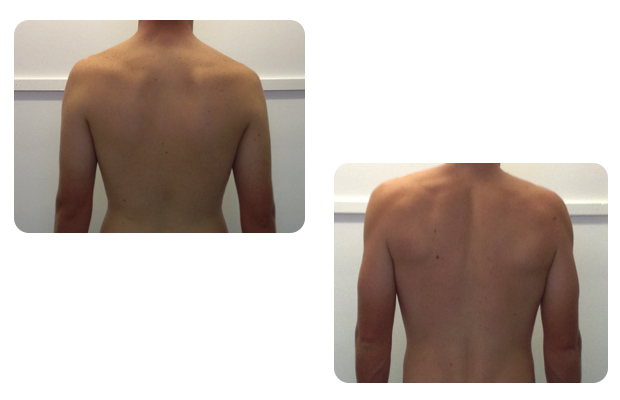
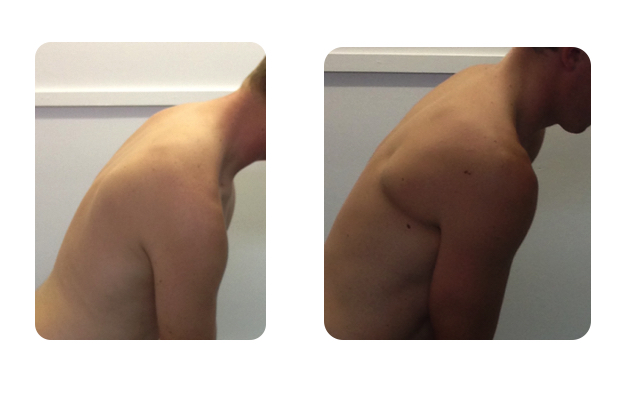
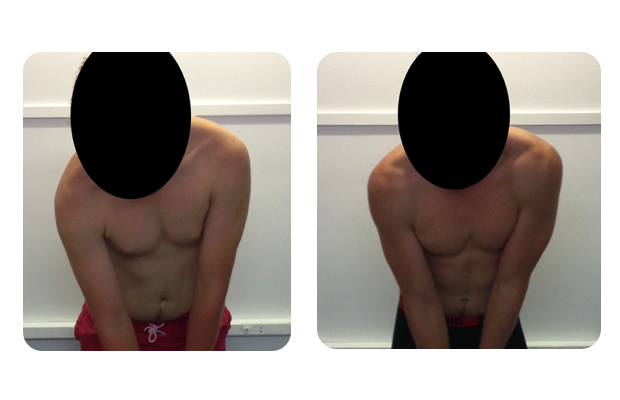
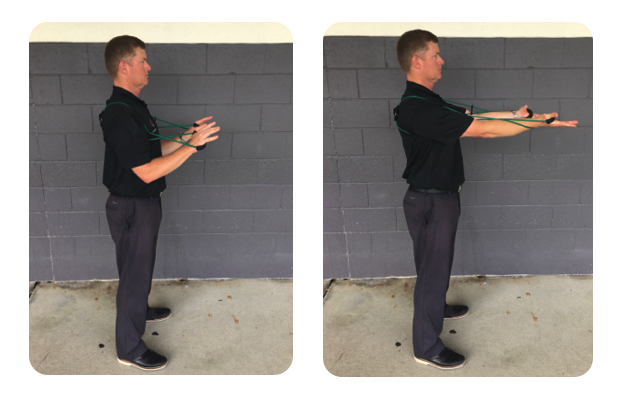
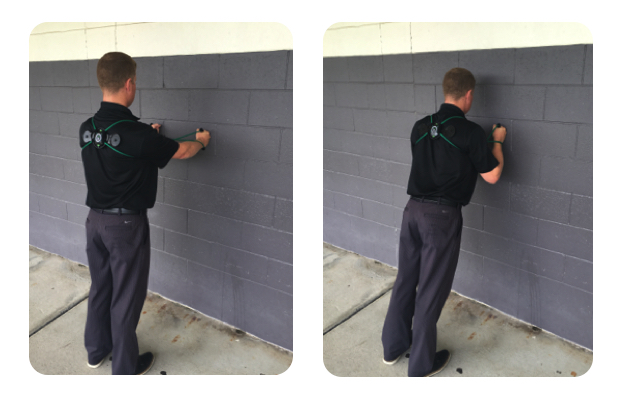
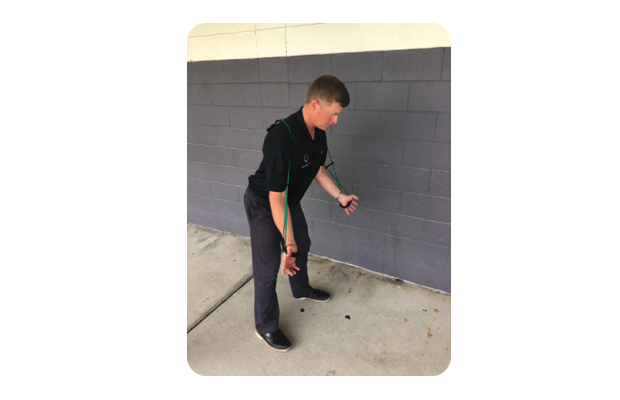
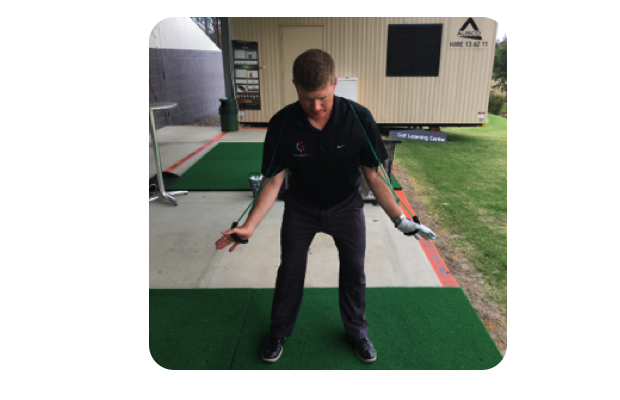
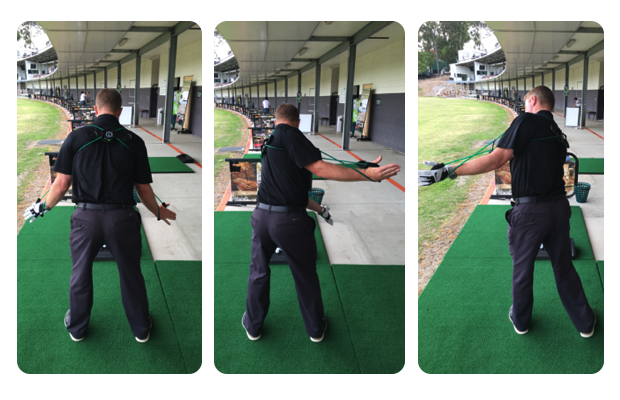





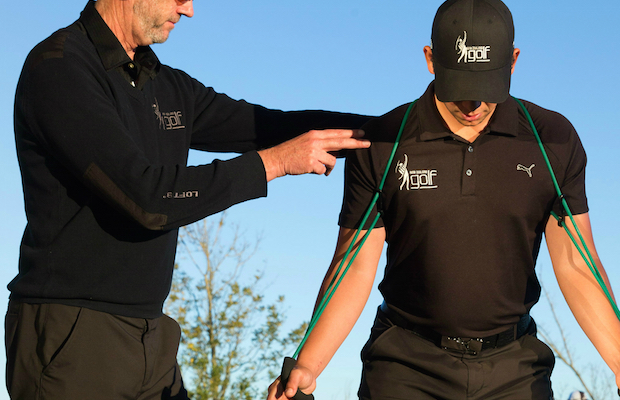
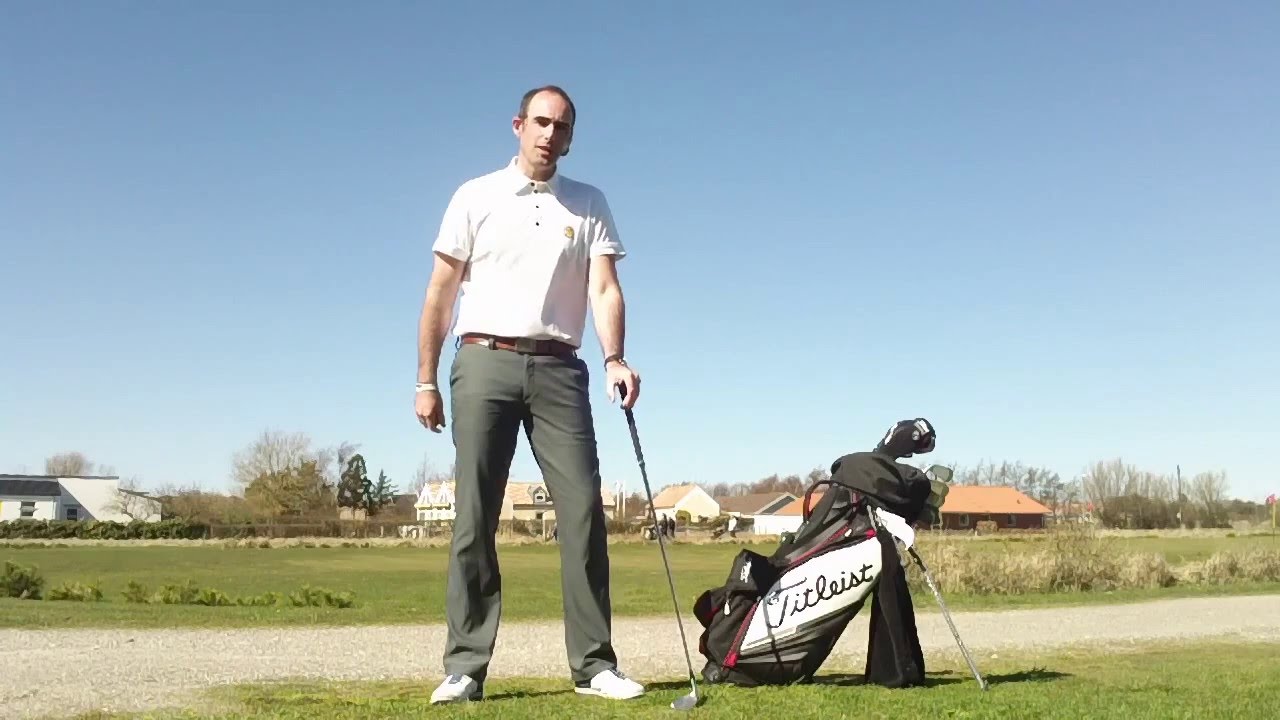
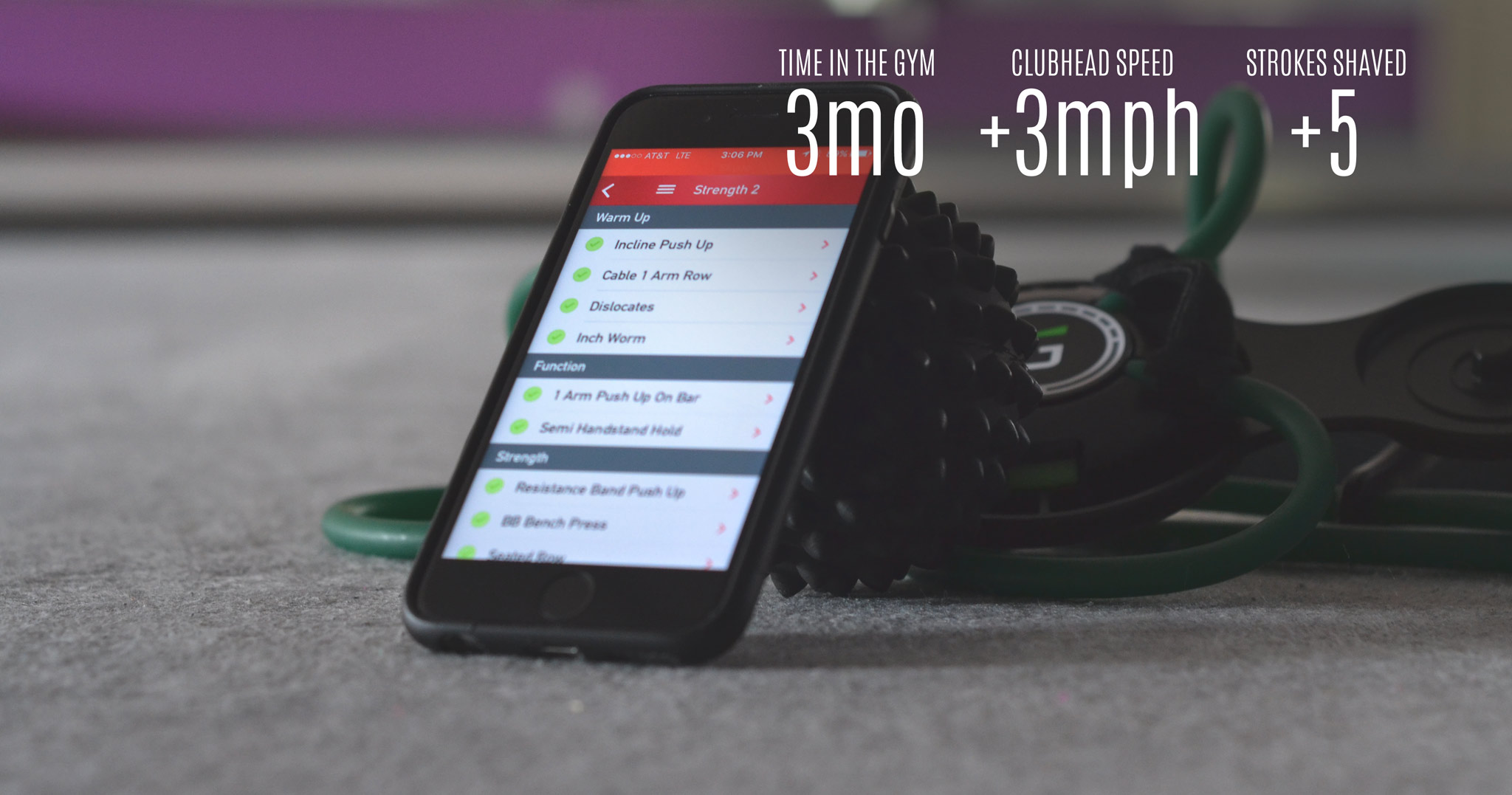
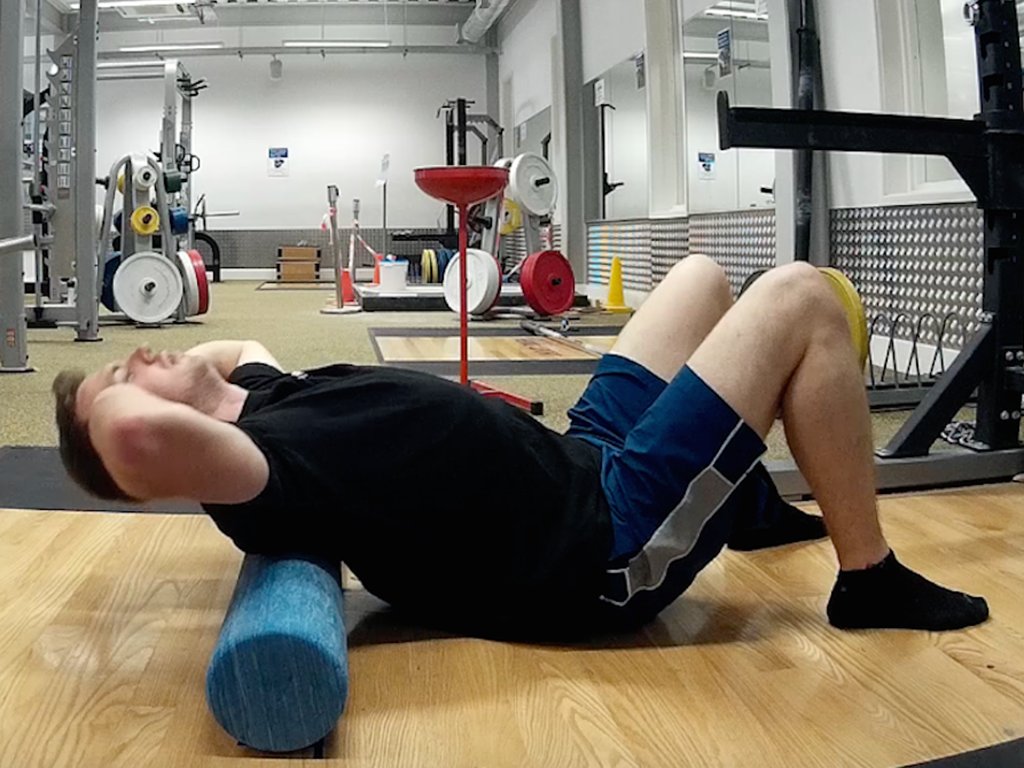
















Tom
Apr 19, 2024 at 1:52 pm
How is it possible for the right shoulder not to be lower at address if the right hand is below the l eft on the club?
Loui Cuppari
Aug 13, 2016 at 5:34 pm
I’ve been working on scapula control and upper arm connection for about a year now and ball striking has improved considerably after 30 odd years of frustration. I believe setting the right scapula is the main key along with connection of the upper left arm.
I think getting this scapula/upper arm control or bracing/setting right is the swing of the future.
Allan
Feb 10, 2016 at 2:05 pm
I agree with Chris. It is not super clear to me what is correct and exactly why the scapula is having such a dramatic impact of club face at impact.
Lou
Mar 19, 2016 at 12:50 am
I believe it allows you to control the lift of the club and horizontal movement (thoracic rotation) using just your “scap muscles”….Doing this gives you a better awareness of the club face is throughout the swing because you won’t be using your hands for rerouting the club head into a proper inside path….the hands can do their job of just controlling the dynamic loft and face position (the handle)….
Mike
Jan 27, 2016 at 8:31 pm
I’ve been working out with the Golf fit regimen for a 6 months and it’s really helped my rotation and flexibility. I’m 63 and my game is improving from 22 to 15 handicap over this past year. I didn’t buy this tubing thingy because I think it’s over priced and you can do it with tubing loops effectively. I just want to say that they are knowledgeable and have helped my game.
Chris
Jan 25, 2016 at 10:48 am
If internal rotation is bad, does that mean the shoulder should be externally rotated at address or during the swing? It is unclear to me from the article what the correct movement is. Any elaboration? Thanks.
rob campbell
Jan 25, 2016 at 9:46 am
If a top 100 player has been working on “scapula stability” for 5 years and hasn’t got it right, why would any normal person think this idea is worth his time? You’ve taken a wrong turn.
Ne26
Jan 24, 2016 at 10:48 am
Sooooo turns out to be another article written by someone pushing their own product.
WRX is rolling in that advertising money.
Billy
Jan 25, 2016 at 8:49 am
Why not?? Seems like you don’t quite understand the article(which is quite interesting)… Lame response